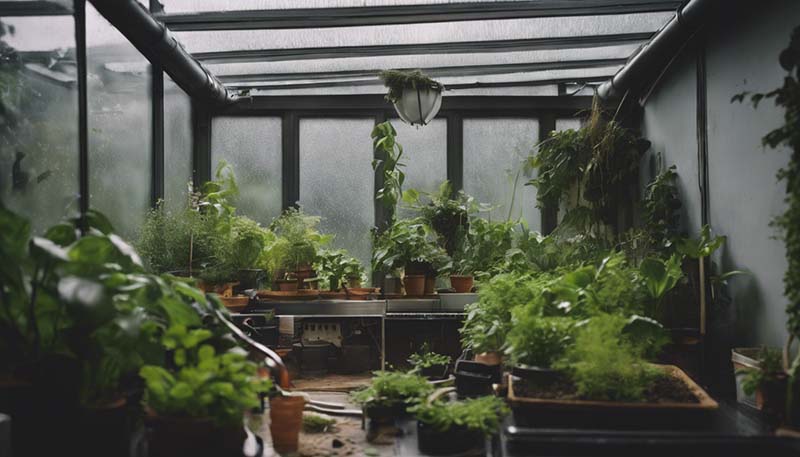Sustainable Indoor Gardening: How to Use Rainwater
Sustainable indoor gardening is a practice that focuses on creating a healthy and eco-friendly environment for plants while minimizing the impact on the planet. One of the key components of sustainable gardening is the use of rainwater as a primary water source. In this article, we will explore the benefits of using rainwater in indoor gardening and provide practical tips on how to incorporate it into your indoor garden.
Benefits of Using Rainwater for Indoor Gardening
There are several advantages to using rainwater for your indoor plants:
1. Chemical-Free Water
Rainwater is naturally free of chemicals and impurities that are often found in tap water, such as chlorine and fluoride. These chemicals can be harmful to plants and may cause issues like leaf burn or stunted growth. By using rainwater, you can provide a cleaner and healthier water source for your indoor plants.
Advertisement
2. Balanced pH Levels
The pH level of rainwater is generally close to neutral, which is ideal for most plants. Tap water, on the other hand, can have varying pH levels that may not be suitable for all plants. Using rainwater can help maintain a balanced pH level in the soil, promoting healthy plant growth.
3. Cost-Effective
Collecting and using rainwater can save you money on your water bills, especially if you have a large number of indoor plants. Additionally, it reduces your reliance on non-renewable resources, making your gardening practice more sustainable.
4. Supports the Environment
Using rainwater for indoor gardening is an environmentally friendly choice. It helps conserve water resources and reduces the demand for treated tap water, which requires energy and resources to produce.
How to Use Rainwater in Indoor Gardening
Here are some practical steps to help you incorporate rainwater into your indoor gardening routine:
1. Collect Rainwater
Start by setting up a rainwater collection system. You can use a simple rain barrel placed under a gutter downspout or invest in a more sophisticated system with built-in filters and storage tanks. Make sure to clean your collection system regularly to prevent the growth of algae and bacteria.
2. Store Rainwater Properly
Store the collected rainwater in a clean, covered container to prevent contamination from dust, leaves, and other debris. You can use food-grade storage containers or specially designed rainwater storage barrels. Keep the stored water in a cool, shaded area to minimize the growth of algae and bacteria.

3. Use a Water Filter
If you are concerned about the quality of the collected rainwater, you can use a water filter to remove any remaining impurities. There are various types of filters available, such as carbon filters and microfilters, which can help ensure that your indoor plants receive clean and safe water.
4. Water Your Plants with Rainwater
Once you have collected and stored the rainwater, you can use it to water your indoor plants. Be mindful of the water temperature, as plants prefer water that is close to room temperature. If the stored rainwater is too cold, you can let it sit in a container at room temperature for a few hours before using it.
5. Monitor and Adjust
Keep an eye on your indoor plants and monitor their response to the rainwater. Some plants may require more frequent watering than others, and the water requirements may change depending on the season and the specific needs of each plant. Adjust your watering routine accordingly to ensure that your plants receive the right amount of water.
Conclusion
Using rainwater in indoor gardening is a sustainable and beneficial practice that can improve the health and growth of your plants while reducing your environmental impact. By following the steps outlined above, you can easily incorporate rainwater into your indoor gardening routine and enjoy the many benefits it offers.
Comment